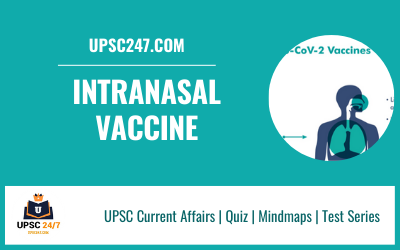CST 100 Starliner UPSC | Explained | Why in the News ?
The launch of Boeing’s uncrewed Starliner Orbital Flight Test-2 (OFT-2), which was supposed to lift off from the Space Launch Complex-41 on Cape Canaveral Space Force Station in Florida on Tuesday, has been postponed once again.
CST-100 STARLINER:
- The Starliner, which is supposed to carry more than 400 pounds of NASA cargo and crew supplies, will take roughly 24 hours to
reach the ISS, after which it will dock there. - The spacecraft has been designed to accommodate seven passengers or a mix of crew and cargo for missions to low-Earth
orbit. - For NASA service missions to the International Space Station (ISS), it will carry up to four NASA-sponsored crew members
and time-critical scientific research. - The Starliner has an innovative, weldless structure and is reusable up to 10 times with a six-month turnaround time.
- It also features wireless internet and tablet technology for crew interfaces.
- When this test flight takes off, it will check the capabilities of the spacecraft from launch, docking, atmospheric re-entry and a landing at a desert in the US.
- The spaceflight will also help NASA to ascertain and certify the transportation system to carry astronauts to and from the space station in the future.
Commercial Crew Program :
- The main objective of NASA’s Commerical Crew Program is to make access to space easier in terms of its cost, so that cargo and crew can be easily transported to and from the ISS, enabling greater scientific research.
- Through this program, NASA plans to lower its costs by sharing them with commercial partners such as Boeing and SpaceX, and also give the companies incentive to design and build the Commercial Orbital Transportation Services (COTS).
- By encouraging private companies such as Boeing and SpaceX to provide crew transportation services to and from lowEarth orbit, NASA can focus on building spacecraft and rockets meant for deep space exploration missions.
- What this means is that in order to transport astronauts to space, NASA has been looking at partnering with companies such as SpaceX who are focused on providing this service.
- To avail their services, NASA pays these companies, similar to how a passenger pays for a flight ticket to go from point A to B.
- Boeing and SpaceX were selected by NASA in September 2014 to develop transportation systems meant to transfer crew from the US to the International Space Station.
- These integrated spacecraft, rockets and associated systems will carry up to four astronauts on NASA missions, maintaining a space station crew of seven to maximize time dedicated to scientific research on the orbiting laboratory
Commercial Orbital Transportation Services ( COTS ) :
- The Commercial Orbital Transportation Services (COTS) was a NASA program, announced on January 18, 2006, to coordinate the delivery of crew and cargo to the International Space Station (ISS) by private companies.
- It successfully flew all cargo demonstration flights by September 2013.
- NASA challenged the U.S. industry to establish capabilities and services that could open New Space markets and support the crew and cargo transportation needs of the International Space Station (ISS).
- Unlike any previous NASA project, the proposed spacecraft are intended to be owned and financed primarily by the companies themselves and will be designed to serve both U.S. government agencies and commercial customers.
- NASA will contract for missions as its needs become clear.
- This is more challenging than existent commercial space transportation because it requires precision orbit insertion, rendezvous and possibly docking with another spacecraft.
- COTS is related but separate from the Commercial Resupply Services (CRS) program (Orbital Sciences Corporation and SpaceX).
- COTS relates to the development of the vehicles, whereas CRS to the actual deliveries.
- COTS involves a number of Space Act Agreements, with NASA providing milestone-based payments.
- COTS does not involve binding contracts.
- CRS on the other hand does involve legally binding contracts, which means the suppliers would be liable if they failed to perform.









